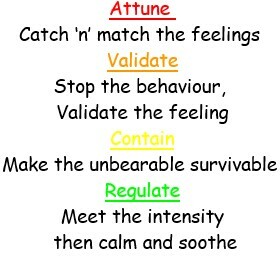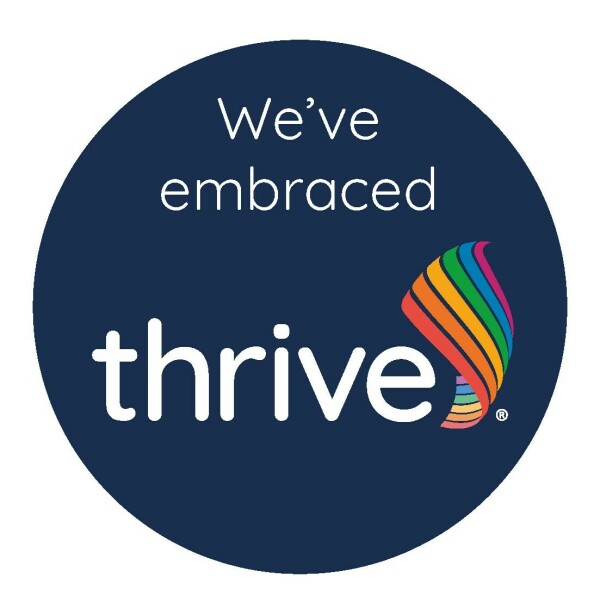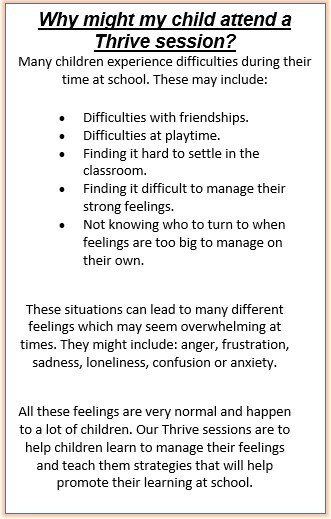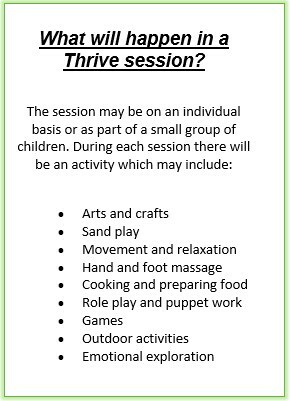Home
Curriculum » Thrive
Thrive
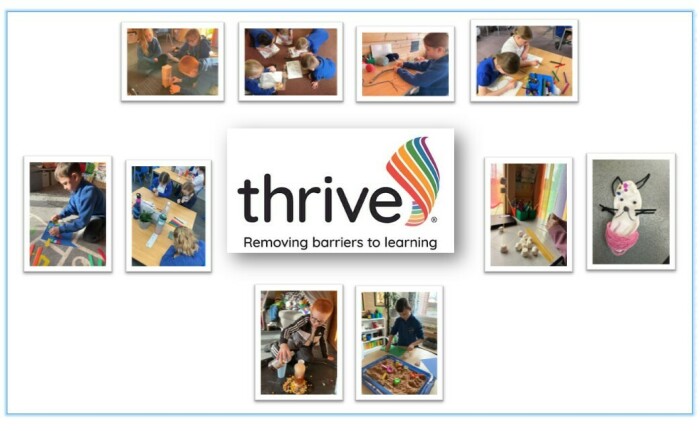
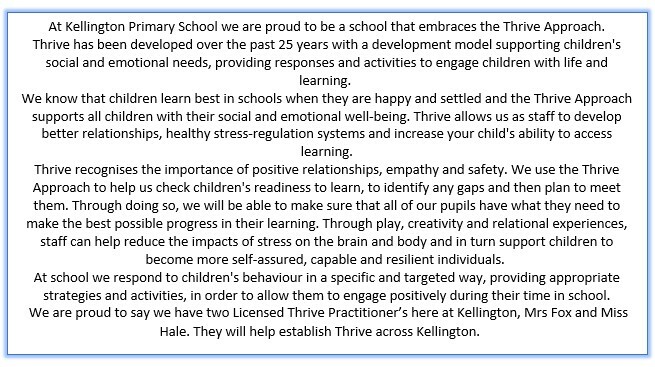
Please take a look at the Thrive Approach video for more information.

Our Staff use PACE: Playfulness, Acceptance, Curiosity, Empathy.
PACE is a trauma-informed and therapeutic approach to supporting children and young people, developed by clinical psychologist Dan Hughes over 20 years ago. The approach focuses on building trusting relationships, emotional connections, containment and a sense of security.
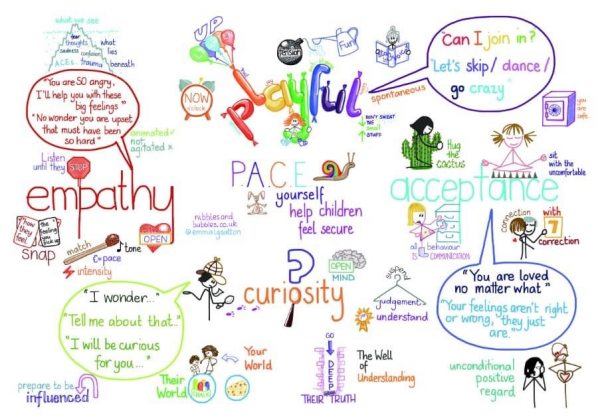
All our Staff use Vital Relational Functions ‘VRFs’ which are tools used in Thrive to address and support a child’s emotional state.
- Attune: This is where we show we are alert to how the child is feeling. We connect with the child and match how the child is feeling through our pitch, pace, volume and body language.
- Validate: This is when we let the child know that it is okay to have their feelings. (“I'm wondering if you might be feeling ____. If that had happened to me, I would be feeling ___ too.)
- Containment: This is where we catch and show that we understand the pitch, intensity or quality of their feelings. We break things down into manageable chunks. (First, we will...)
- Regulate: This is where we must demonstrate emotional regulation by soothing and calming the child. The children must experience being calmed before they can begin to calm themselves.
Thrive Vital Relational Functions (VRF’s)
